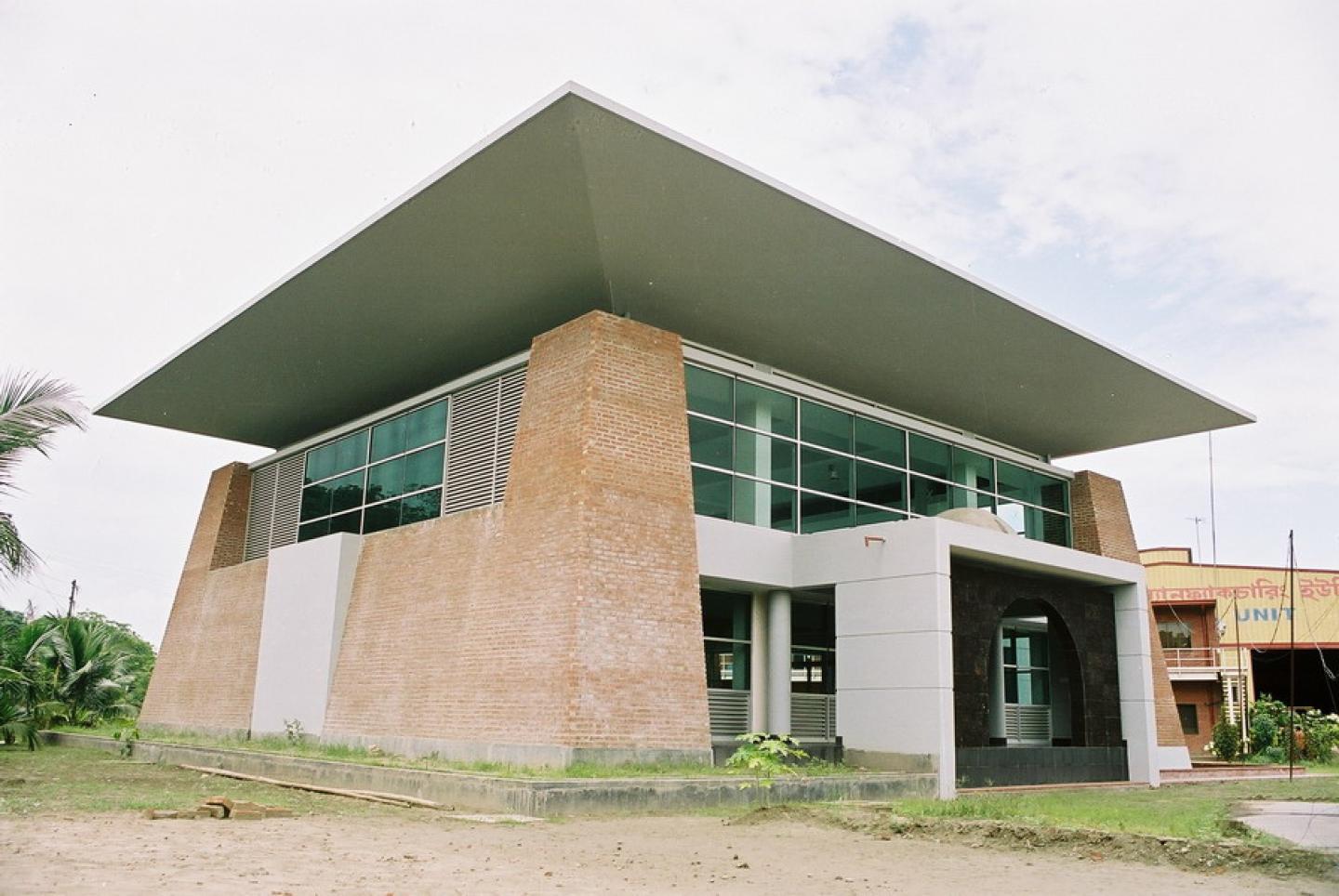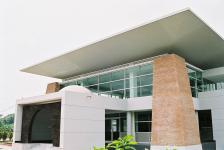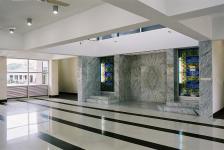The client requested a mosque building for his factory employees and nearby village communities of Jagir in the district of Manikganj. The program asked for a modest requirement of a mosque to facilitate 500 worshippers to pray at a time in each prayer of the day. The lot given was only 120 feet by 105 feet, a part and tract of the existing factory complex located on one side of the main entry of his factory complex and bordering Dhaka-Aricha highway.
The site is a private freehold property developed for industrial use, part of which is designated for the mosque, 120 feet on one side and 105 feet on the other, looking across the inter-district highway to the west which immediately attracts the highway travellers. Maximum ground coverage by built form is 5000 square feet including landscaped elements. Total built up area is 8000 square feet.
Twelve concrete columns rise within the volume to support the imposing waffled invert-pitched roof structure. Floors are either as a RCC slab-on-grade in the lower level or as a slab-on-beam frame in upper level. The concrete roof cantilevers almost 13 feet all over the volume it shelters.
Elements were sought for to crystallize the architecture of mosque and considered utmost important to create a man-made sacred space, first element was to select for authentic materials – brick exposed and the second is the pure geometry. Man-made nature is enhanced through the selection of materials such as exposed brick, metals with natural colour and glass itself as a transparent media. On the exterior overall, corner battered walls are clad with brick, granite clad-in archways, inner-walls of glass and louver are detailed to express the composite nature of the layers of walls.
The construction of the mosque reveals a simple hierarchy of building materials; the main entrance archway, south arch are clad in mirror finish granite and the raised plinth is clad in with mirror finish homogenous tiles. The floor is also mirror finish homogenous tiled with occasional public areas are adorned with marble. Brick masonry piers at four corners are left exposed pointed and tapered upward to accentuate to hold the inner ‘glass box’ firmly and support roof. Interior wall surfaces are basically glazing system with aluminium frame and louvers, stainless steel as railings around the void and at stair.
First, the mosque interiors are strongly connected to the outside world. Natural light from windows, stain glasses and glass blocks skylights articulates the mosque spaces and brings daily and seasonal cycles into the interior. Second, the construction of the mosque interiors is not abstract but directly expressed; details reveal the layers of construction and articulate the relationships of materials to each other. In this way, the interior spaces displayed are connected to ordinary experiences so that they may be understood to be part of everyday life.
2001
2002
Project: BSML MOSQUE
Location Bashundhara Steel Mills Ltd. Manikganj
Owner: Bashundhara Group
2001-2002
Architect of the Year Award 2003 (AYA), India
Architect Mustapha Khalid
Architect Md. Foyez Ulaah
Architect Shahzia Islam
Favorited 1 times


.jpg)
.jpg)

.jpg)


